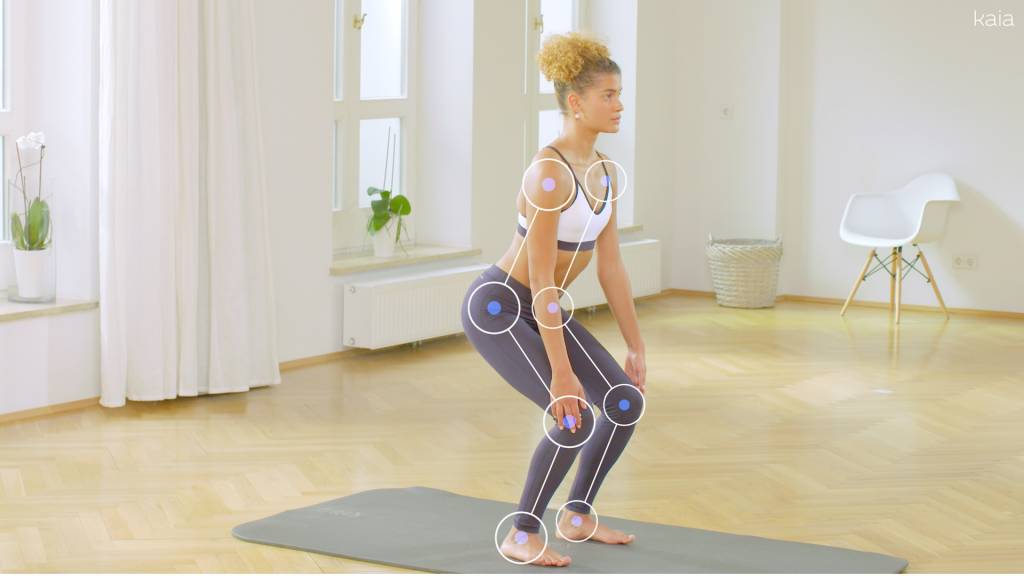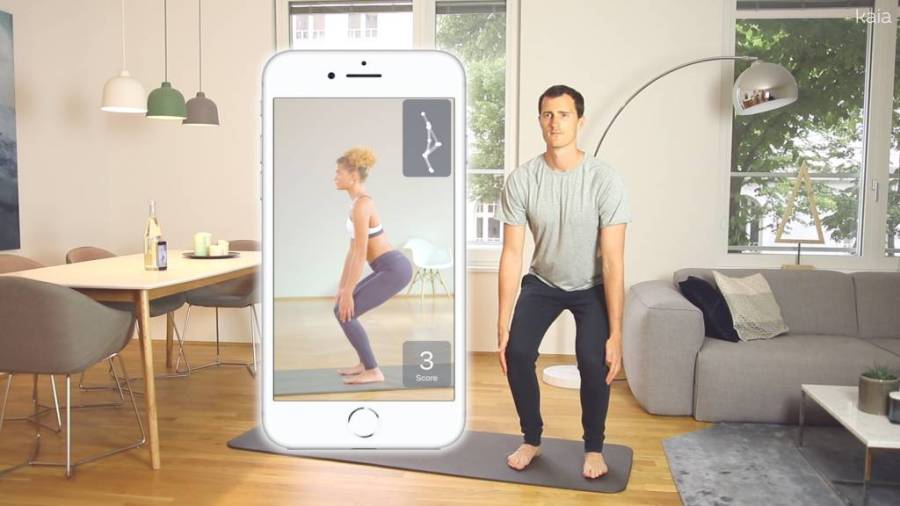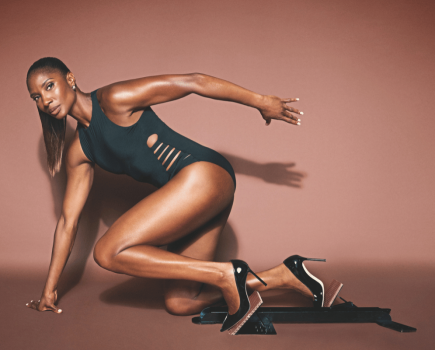It sounds like something from a sci-fi film, but your phone can now be your very own AI personal trainer thanks to a new app.
Kaia Health’s Perfect Squat Challenge a world first, and it launches today. We were lucky enough to have a preview over the weekend, and the technology is really incredible.
It’s a simple premise – a robot personal trainer who wants you to perfect your squat technique. It’s very user-friendly (as well as free!) and to use it you just sit your phone upright, launch the app, step away a few paces and wait for it to register you. You’ll see the main points of your body lit up on the screen. – the app tracks 16 key points on the body using the camera. You then follow the instructions to undertake a squat, and Kaia – your virtual trainer – then tells you how you’re doing.
Our responses ranged from: ‘don’t tilt your head back’, to ‘make sure you can see your knees’, and finally ‘perfect!’ She keeps a tally of the squats good enough to make the grade, and you can then use your total to challenge friends or family via Facebook, Twitter, etc.

The thing we liked about it was, while online exercise videos can be great, they leave you vulnerable to performing moves incorrectly and risking injury. It was reassuring as well as instructional to have Kaia tracking our every move and suggesting tweaks. It also made us realise how easy it is to lose form when you stop concentrating properly!
While at the moment it’s just squat-based, the technology will hopefully allow doctors, PTs, physiotherapists and other professionals to help patients and clients perform a range of exercises safely at home.
Later this year, Kaia Health plan to integrate this technology into their Kaia Back Pain Relief at Home app.
‘In the future, this technology will integrate within our medical device apps for diseases and conditions such as back pain,’ says Maximilian Strobel, head of Kaia Health’s AI Lab. ‘Creating a scalable, cost-effective therapeutic tool. This democratises access to high-quality, bespoke fitness, rehabilitation and physiotherapy – and could reduce the burden on health services.”
- The app is available to download free from today
- Find out more about Kaia’s Perfect Squat Challenge
[/vc_column_text][/vc_column][/vc_row][vc_row][vc_column][vc_video link=”https://youtu.be/CBPsMGQB5p0″][/vc_column][/vc_row]
- Try some Shona Vertue yoga tutorials








